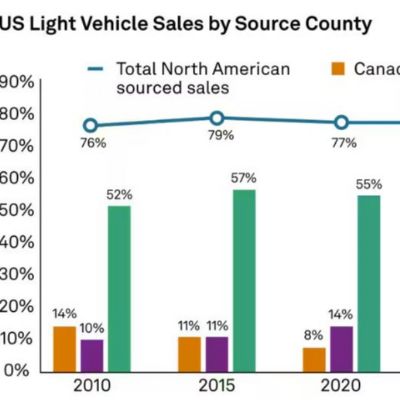Harley-Davidson Rides a New Road
May 1, 2009Comments
Orange County Choppers has carved out quite a reputation in the world of reality television, which chronicles larger-than-life characters producing custom motorcycles in a 100,000-sq.-ft. upstate-New York shop. The newest cast member, a 350-ton hydraulic press that deep draws fenders and fuel tanks as well as the occasional oil drum and basketball, is profiled in Brad Kuvin’s article beginning on page 12.
To the tune of 150-200 bikes per year, OCC also has carved out a nice niche among motorcycle manufacturers, which number about 60 in the United States. Such a niche is sustainable for a company like OCC. Automotive, too, has its share of custom producers, though not as numerous since automotive custom-building still incurs heavy labor and equipment cost.
But history tells us that smaller companies on their up tend to be risk-takers and have the size (or lack of it, to be precise) to navigate market changes and opportunities with agility. The big boys—mature companies with historically large market shares—tend to struggle here. Take a look at Brad’s editorial on page 5. It describes the incredible, innovative history of General Motors, which propelled the company to the top of the automotive pack and sustained it for nearly a century. Can GM innovate enough these days to earn back its market share and profitability?
If GM had a motorcycle counterpart, it would be Harley-Davidson. The Milwaukee, WI, firm has been around even longer than GM—it celebrated its centennial in 2003—and boasts 2008 revenue of $5.5 billion. Harley-Davidson is by no means in the headlines-grabbing dire straits as is GM, but concerns are there. Revenues are off from nearly $6 billion in 2006, with total debt more than doubling in that period to almost $4 billion. Much of that reflects the economy, which led the company to reduce motorcycle shipments in 2008 and plan for further reductions in 2009. Share prices have tumbled, too, as at year-end 2008, share price was 63.7 percent lower than when the year started.
More tough news: U.S. market share showed a decline, from 48.7 percent in 2007 to 45.5 percent in 2008. Many factors affecting GM have impacted Harley-Davidson: foreign competition, high fixed costs, a lousy economy, etc. But some factors are unique to the motorcycle kingpin. As of 2007, the latest data available, the median age for a Harley buyer was 47, rising from 45 in 2004 and comparing to 38 for buyers of competing motorcycles. Median income of Harley buyers continues to grow as well—no surprise given that the company sells on quality and tradition, not on price. And consider the Harley brand. It’s unique, and its longtime fans have als seen themselves as part of an exclusive club. Not so much so now, as the company ships in the range of 350,000 cycles annually, compared to less than 37,000 as recently as 1986.








